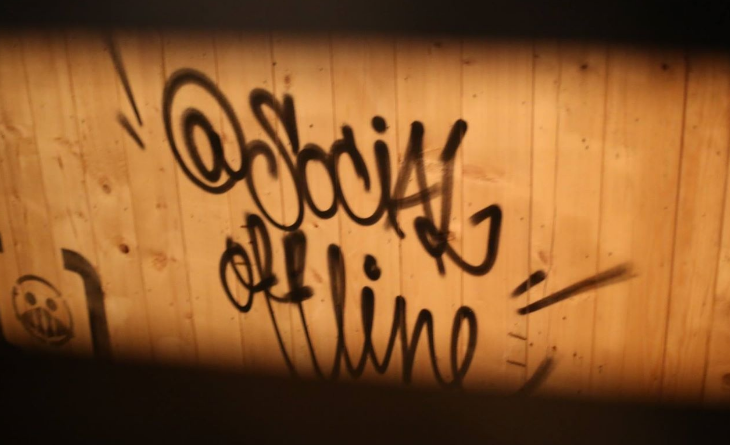 For all the talk of “reinvention” in recruiting, for all the products promising to “disrupt” hiring, and for all the banal banter about fixing what’s “broken” in talent acquisition today, the one part of the process that has more or less escaped any modicum of automation, transformation or innovation is perhaps the most important: the job interview.
For all the talk of “reinvention” in recruiting, for all the products promising to “disrupt” hiring, and for all the banal banter about fixing what’s “broken” in talent acquisition today, the one part of the process that has more or less escaped any modicum of automation, transformation or innovation is perhaps the most important: the job interview.
There’s a reason, unlike the resume or on-premise software or the manifold other job search standbys, the interview has remained more or less above the fray, universally accepted and unilaterally adopted as an inextricable part of the employee screening and selection process.
While technology like video interviewing solutions or structured interviewing software has emerged to add some method to the madness, and some science to the art of going with your gut, interviewing remains a core recruiting competency and perhaps the most important elements of every employer’s hiring process, across all levels and all industries.
It’s generally the last part of the process before a hiring decision is made for a reason – it’s the way we identify which qualified candidates match our company’s corporate culture, our company missions, our visions and our values. The sort of stuff you really can’t get from reading a resume or through a perfunctory prescreen – primarily, the soft skills that enable us to make the hardest of hiring decisions with some degree of confidence and piece of mind.
The Massacre: Why We Still Suck At Job Interviews.
Chemistry counts, and successful candidates often get the nod simply because some intangible, indescribable connection happens between both parties in an interview; the best feedback many hiring managers can give is that the candidate somehow “clicked” – which, of course, is really hidden confirmation bias at work.
Let’s be honest, while you’ve only got one chance to make a first impression, there are a million ways to screw it up, too – particularly when personal preference, corporate politics and team dynamics are in play (and they always are when it comes to hiring decisions).
Interviews, of course, aren’t just the ultimate selection tool for hiring teams; they’re also imperative for impressing top talent and finding out enough information to do due diligence while also continuing to soft close the candidate, who, if they’re really “A” players, are inevitably in process with other employers or have the sort of choice afforded to candidates on the right side of the skills gap.
The interview should be about making sure both sides are comfortable with each other, that the move makes sense for both parties and the candidate and the employer alike can feel confident that they’re making the right decision – and the relative stakes are high on both sides of the table.
That’s why as a recruiter, it’s important to make sure you’re able to effectively partner with both your candidates and hiring managers to maximize the relative impact of interviews, enabling employers and candidates to make better decisions when it comes to finding fit when filling reqs.
The end result of adopting these hiring best practices include improved time to fill, higher ratio of offers accepted, improved candidate experience, smoother on-boarding and a demonstrative impact on whatever metrics your company happens to use to define the ever elusive concept of “quality of hire.” But one thing is certain: quality of hire, largely, depends on the quality of the interviewing process informing that hiring decision. If you interview better, obviously, you’ll hire better. It’s not a hard concept to understand.
But since we still seem to be struggling with maximizing the ROI of interviewing and ensuring that it’s more than a perfunctory part of your hiring process, here are some clues every recruiter and employer should look for when it comes to cutting through the crap and transforming job interviews from their greatest weakness to their greatest strength (hint: don’t ask about that stuff).
Hate It Or Love It: How Biases Affect Corporate Culture
 Before looking outside your organization to source, screen and select a new hire, it’s important to first look inside your company and be able to define more than just precisely why the job matters to the bigger business picture, its primary responsibilities and the requisite experience or expertise requirements you’re looking for, the kind that are inevitably turned into a list of bullet points on your boilerplate JDs.
Before looking outside your organization to source, screen and select a new hire, it’s important to first look inside your company and be able to define more than just precisely why the job matters to the bigger business picture, its primary responsibilities and the requisite experience or expertise requirements you’re looking for, the kind that are inevitably turned into a list of bullet points on your boilerplate JDs.
This stuff is important in recruiting, but even more so are your ability to also accurately assess your company’s values, vision, company culture, EVP and whatever else might be required to ensure that you’re able to compare a prospective employee’s relative strengths and weaknesses against when trying to find “fit.”
And while that concept may remain subjective, amorphous and unquantifiable, let’s go ahead and agree that the goal of recruiting, ultimately, is to make sure fit happens with every hire. Of course, screening candidates against these intangibles, which can often include professional biases, personal preferences or simply that gut feeling upon which most hiring decisions are ultimately based.
Instead of looking for diversity of backgrounds, perspectives or experiences, however, this same need to hire for “fit” leads many hiring teams to look for candidates who look like them, whether or not they’re conscious of the fact that hiring for homogeneity and diversity/inclusion are diametrically opposed concepts.
Combating these forces requires recruiters to essentially intervene, when necessary, and engineer that “click” that often happens organically, particularly when it comes to helping the right candidate make the right impression, even if they might not fit the exact professional profile, personality or pedigree that the hiring team traditionally looks for (a phenomenon which is always unspoken, but often easily seen in most office environments).
Research suggests that hiring decisions usually happen within the first minute of any interview, meaning that first impressions really do count – which is why instead of the widespread autonomy most hiring teams have, successful recruiting requires active intervention to ensure a successful outcome for candidates and employers alike.
Too often, offers are incumbent on things like the mood of the hiring manager at the time (a bad day can sink even the greatest of candidates) or the general demeanor of other interviewers who might approach their interaction with the candidates as an unwelcome distraction instead of a necessary dialogue; when the conversation feels forced instead of free flowing, then it’s almost always a bad sign that things are going south.
By giving hiring managers a set of competencies to screen for or standardized scorecards to rate the relative strengths and weaknesses of each candidate, recruiters can ensure that while not every candidate can “click” or make a great first impression, everyone is at least given an equal opportunity that’s based on feedback, not feeling. Best feel that, my friends.
Window Shopper: The Science Of Smiling and Why It Matters in Job Interviews.

If there are two things that normally don’t go together, it’s the job search and happiness – and yet for some reason, while we value professional presentation and polished demeanors when assessing candidates, one of the first things we seem to look for in an interview is how passionate or enthusiastic that person appears about the company or opportunity.
This, of course, is almost always vacuum deduction – and research shows that one of the principal ways bias influences this sense of “enthusiasm” is simply whether or not a candidate smiles.
This seems stupid, but we see a candidate smiling, our minds immediately assume good intent, which means that presentation can actually matter more than practice when it comes to candidate selection.
A candidate who’s scowling or seems apathetic, even if that’s the only natural reaction to your dumb ass “tell me about a time when” questions, conversely, will be seen as disengaged and disinterested, even if that’s not actually reflected in their answers or actual verbal interactions. Never question the power of those pearly whites – they’re gold when it comes to subverting subconscious bias.
But recruiters would do well to familiarize themselves with the scientifically proven, innately distinguishable difference between a real, authentic and meaningful smile – known as the Duchenne smile, presumably after the world’s only visibly happy Frenchman, and those “smiles” which are faked, forced or otherwise feigned (there’s no scientific name for this, so let’s just call it “that shit eating grin on every crappy candidate’s face”).
Simply, the Duchenne smile isn’t in the mouth – it’s actually in the eyes. When we smile for real, the muscles around the cheeks and the eyes are engaged, which, in turn, lead to the pulling up of the mouth we normally associate with smiling – mouth muscles have nothing to do with it (although they’re also the muscles responsible for making us frown, which, yes, can indeed be turned upside down, according to kinesiology, neuroscience and Oprah).
Even if your candidate is like the job search version of Olivier, there’s a pretty easy method for recruiters to spot (and stop) method acting in auditions and ensure that even the best actors never get cast in the wrong roles. That’s to look at the candidates eyes, and see if their smile is real – and if you can see it in their eyes (you’re innately wired to do so, by the way), then you know that they’re not faking it. Faking a Duchenne smile is nearly impossible, as its controlled by the limbic system that regulates emotion.
Which means while you can fake enthusiasm, the one thing you really can’t fake is something as simple as a smile. So, hope you’re happy…
Outta Control: Anxiety, Stress and the Job Interview.
 Look, every interview is more or less engineered for maximum anxiety – you can’t blame anyone for being a little nervous at meeting a bunch of potential coworkers, colleagues, having to impress the hiring team in what’s more or less a transactional, forced and finite interaction with their skills and experience while figuring out for themselves whether or not they even want the damn job or not.
Look, every interview is more or less engineered for maximum anxiety – you can’t blame anyone for being a little nervous at meeting a bunch of potential coworkers, colleagues, having to impress the hiring team in what’s more or less a transactional, forced and finite interaction with their skills and experience while figuring out for themselves whether or not they even want the damn job or not.
The job interview is exactly why Xanax exists – you’re aware you’re being judged and playing a game, but you never really know the rules – just the optimal outcome, which in most cases, is an offer.
Of course, in most cases, interviews don’t end in offers, but rejection – another aspect of this part of the process that makes the average candidate need to take some sort of chill pill (or shot, for that matter). If you don’t remember the last time you looked for a job, trust me – interviews suck, big time.
The thing is, there’s nothing wrong at all with candidates who may come across a little nervous, tense or distant – recruiters need to remember that this is a nerve wracking experience for even the best candidates, and it’s up to recruiters to help put them at ease and help them become comfortable enough to put their best foot forward when meeting the hiring team.
It’s important to accept that applicants who really care about getting the job should be nervous. It’s how they deal with that anxiety and whether or not they can overcome it during the sometimes panic inducing in-person interviewing process that determine a candidate’s success or failure. Being able to deal with pressure and handle stressful, tense or awkward interactions with aplomb is one soft skill every employer is always looking for.
One key way recruiters can help reduce candidate anxiety is through the psychological concept of “priming for power.” That sounds kind of nefarious, but it simply means that if a candidate feels like they’re in control of the situation, and that if they feel as if they have some modicum of power, no matter how minute that might be, their anxiety will be minimized, since this is generally triggered by the phenomenon of fearing the unknown.
Recruiters and candidates alike know that in a cutthroat, competitive job market, with low unemployment and limited supply of workers with critical skills, like STEM, job seekers are more or less in the driver’s seat, at least for white collar, exempt, experienced positions (the type that occupy most corporate recruiters’ relative req loads).
Reinforcing that the interview is designed to help the candidate make the right choice, that they’ll have the ability to ask questions with impunity and get an authentic, realistic look at the role, its responsibilities and how those fit in with the larger company mission or bigger business picture will reduce candidate stress by underscoring the fact that this is a mutual decision – and that the entire point of the process is to eliminate as much of that element of the unknown as possible.
No candidate can be their best if they’re unnecessarily stressed out or anxious – and with the right coaching and preparation by recruiters, they never have to feel anything but ready to kick ass by the time they move on and meet with the hiring team. Because the only person who really can’t control the outcome of that interview interaction is the recruiter themselves – so if anything, we should be the nervous ones (and are, for the most part).
I’m The Man: Screening For Skills, Not Stories.
 As an employer, you’ve probably already compiled a job description, with both required and preferred requirements, some sort of rundown of the responsibilities and insight into the department, company or role (even if that’s just bullet points, boiler plates and buzzwords).
As an employer, you’ve probably already compiled a job description, with both required and preferred requirements, some sort of rundown of the responsibilities and insight into the department, company or role (even if that’s just bullet points, boiler plates and buzzwords).
These lists, which ask what a candidate can do for you (not what you can do for a candidate), range from simple tasks (being able to use e-mail or a Word Processor, for example, or knowing how to put together a basic Powerpoint deck) to the highly technical, highly complex skills that are so in demand by so many employers today (think: data science, programming, healthcare).
Whether you’re looking for some mouth breather capable of lifting 50 pounds or operating heavy equipment, or you’re looking for a quant in some niche profession with some post-doc professional experience and winning personality (or some similar ‘purple squirrel’), make sure candidates are able to speak to the specific prerequisites listed on the job descriptions using specific examples and observable outcomes; candidates’ skills are more or less worthless unless they can be linked to actual business or bottom line outcomes.
Of course, some highly specialized or esoteric roles might allow some room for a candidate to hyperbolize, misrepresent or flat out BS experience through buzzwords, anecdotes and specious correlations instead of actual causation (or demonstrative results). This is why it’s important for employers to consider adding skills based testing, situational interviewing or some other form of standardized assessment tool to the selection process.
There are a ton of options out there, and no matter how niche the role you’re recruiting for might be, chances are there’s a tool out there that will not only force candidates to show their work, so to speak, but also, to benchmark and baseline every candidates’ relative performance in a standardized, systemic and data driven way to ensure that when you’re putting your money where a candidate’s mouth is, that investment is going to pay off.
Candidates make shit up all the time, but every employer should have some check in place to make sure they don’t get away with it. Besides, that’s the recruiter’s job, thank you very much.
In Da Club: Dress Codes, Discrimination and Job Interview Success.

It’s easy to judge a book by its cover, and that candidate with the sleeves of tats, pink hair and Hot Topic t-shirt as someone you probably don’t want to put in front of clients or customers (outside the hospitality, retail and adult industries, anyway).
Or that the dude in the three piece suit with diamond cufflinks and the matching Rolex might be an obviously disastrous fit for an entry level or administrative kind of gig.
Yes, these are extreme examples, but recent studies suggest inappropriate dress as being one of the primary reasons employers say they disqualify candidates during the interview process.
The thing is, every company has a different definition of what, exactly, constitutes ‘professional dress,’ even within the same market or industry – or, in many cases, within the same company. For instance, one employer may have a West Coast office where jeans are acceptable at the office, while their East Coast colleagues wouldn’t even think of showing up without a shirt and tie.
Company culture isn’t a monolith, and due to these departmental and market variations, it can often be hard for a candidate to tell what, exactly, they should wear to an interview, even if they do their research. Clothing confirms confirmation bias more strongly than just about any other element, given that we’re looking for people who look like us (subconsciously, at least).
This is also perilous for a candidate, since showing up in a coat and tie to a place where everyone’s in hoodies is as big a faux pas as wearing flip flops to an in person at an I Bank – and they’re rarely offered any actual insight into this. Instead, they have to kind of show up and hope for the best (asking would be seen as stupid, even though recruiters almost never explicitly prepare candidates with detailed instructions on acceptable attire or guidance on what to wear in an interview).
By giving every candidate some sort of written checklist or insight into your company specific dress codes (formal or informal), you’ll remove this wild card and ensure that neither you nor your hiring manager get any of the sartorial surprises that happen all too often at most employers, and that the only “fit” you’ll have to find has to do with what the candidate can do, not what they happen to be wearing.
By providing this information explicitly to a candidate prior to having them come in for an interview, employers can also preempt any gender, age or racially motivated stereotypes or stigmatization that might occur when a candidate is unfamiliar with a company culture, its overall business norms and brand image. We all define “business attire” differently.
Better to make your company’s definition explicit and consistent, so your candidates and hiring managers have one less thing to worry about – and job seekers prove they’re capable of presenting themselves according to your professional standards prior to showing up overdressed, underprepared or “unprofessional” by your standards – which, again, might not be the same ones they’re used to.
This advice seems as obvious as “body language tells you everything you need to know.” Stop rolling your eyes – it’s true. Of course, reading what, exactly, that body language is trying to tell you isn’t always easy. That’s why using the above tips and tricks should help you nail job interviewing (or at least, provide a really good start for most recruiters).
And that should be enough to put a Duschenne smile on any recruiter’s face.
Matt Charney is the Executive Editor of Recruiting Daily. Follow him on Twitter @MattCharney or connect with him on LinkedIn.
 As the dust settles from Microsoft’s acquisition of LinkedIn, the rumors have just begun to swirl. The first wave of reactions were all about the product and people were posting almost daily. Questions like what will they do with their new asset? How will LinkedIn’s current offerings and recent acquisitions change?
As the dust settles from Microsoft’s acquisition of LinkedIn, the rumors have just begun to swirl. The first wave of reactions were all about the product and people were posting almost daily. Questions like what will they do with their new asset? How will LinkedIn’s current offerings and recent acquisitions change? A while back, I read this article from Vik Singh on TechCrunch with a headline that I couldn’t help but click: “ Two Worlds Colliding: How LinkedIn Could Take On Salesforce.” My very first reaction to the headline? “Ha.”
A while back, I read this article from Vik Singh on TechCrunch with a headline that I couldn’t help but click: “ Two Worlds Colliding: How LinkedIn Could Take On Salesforce.” My very first reaction to the headline? “Ha.” He makes a compelling argument for LinkedIn’s advantage. A system like Salesforce starts as a blank slate. All of the data has to be merged and leads have to be generated. There’s a lot of work to be done before it’s viable. LinkedIn, on the other hand, has the advantage with marketers because they start with a pile of data – about 433 million users worth. Think of every intricacy and detail people share on LinkedIn, then hand that to a marketing team as their database. That’s scary shit. Singh brought up a hypothetical that takes it one step further than the user data you’ve added to the system.
He makes a compelling argument for LinkedIn’s advantage. A system like Salesforce starts as a blank slate. All of the data has to be merged and leads have to be generated. There’s a lot of work to be done before it’s viable. LinkedIn, on the other hand, has the advantage with marketers because they start with a pile of data – about 433 million users worth. Think of every intricacy and detail people share on LinkedIn, then hand that to a marketing team as their database. That’s scary shit. Singh brought up a hypothetical that takes it one step further than the user data you’ve added to the system. Yes, I love data. I’m a marketer. But that kind of data won’t convince a huge corporation to rip out their HubSpot or Marketo system that’s already completely integrated into Salesforce. I’m sure the consultants are salivating at the idea but I just don’t think you can convince people to buy into that change.
Yes, I love data. I’m a marketer. But that kind of data won’t convince a huge corporation to rip out their HubSpot or Marketo system that’s already completely integrated into Salesforce. I’m sure the consultants are salivating at the idea but I just don’t think you can convince people to buy into that change.






 Joel Cheesman has over 20 years experience in the online recruitment space. He worked for both international and local job boards in the late ‘90s and early ‘00s. In 2005, Cheesman founded HRSEO, a search engine marketing company for HR, as well as launching an award-winning industry blog called Cheezhead.
Joel Cheesman has over 20 years experience in the online recruitment space. He worked for both international and local job boards in the late ‘90s and early ‘00s. In 2005, Cheesman founded HRSEO, a search engine marketing company for HR, as well as launching an award-winning industry blog called Cheezhead.
 For all the talk of “reinvention” in recruiting, for all the products promising to “disrupt” hiring, and for all the banal banter about fixing what’s “broken” in talent acquisition today, the one part of the process that has more or less escaped any modicum of automation, transformation or innovation is perhaps the most important: the job interview.
For all the talk of “reinvention” in recruiting, for all the products promising to “disrupt” hiring, and for all the banal banter about fixing what’s “broken” in talent acquisition today, the one part of the process that has more or less escaped any modicum of automation, transformation or innovation is perhaps the most important: the job interview.
 Before looking outside your organization to source, screen and select a new hire, it’s important to first look inside your company and be able to define more than just precisely why the job matters to the bigger business picture, its primary responsibilities and the requisite experience or expertise requirements you’re looking for, the kind that are inevitably turned into a list of bullet points on your boilerplate JDs.
Before looking outside your organization to source, screen and select a new hire, it’s important to first look inside your company and be able to define more than just precisely why the job matters to the bigger business picture, its primary responsibilities and the requisite experience or expertise requirements you’re looking for, the kind that are inevitably turned into a list of bullet points on your boilerplate JDs.
 Look, every interview is
Look, every interview is  As an employer, you’ve probably already compiled
As an employer, you’ve probably already compiled 


















 Voice search has become a nearly ubiquitous part of our existence, moving from the margins to the mainstream so quickly it’s hard to believe that just two years ago, only 41% of American adults over the age of 18 reported to having used what had already become a widely available (if not widely adopted) functionality.What a difference a couple of years make; Apple’s recent announcement that it was opening up its popular Siri platform to third party developers was only the most recent signal in this seismic technological shift from typing to talking. With its OK Google platform, the world’s biggest consumer tech property has only driven further adoption and innovation in developing voice command as a core component of UI/UX.
Voice search has become a nearly ubiquitous part of our existence, moving from the margins to the mainstream so quickly it’s hard to believe that just two years ago, only 41% of American adults over the age of 18 reported to having used what had already become a widely available (if not widely adopted) functionality.What a difference a couple of years make; Apple’s recent announcement that it was opening up its popular Siri platform to third party developers was only the most recent signal in this seismic technological shift from typing to talking. With its OK Google platform, the world’s biggest consumer tech property has only driven further adoption and innovation in developing voice command as a core component of UI/UX.
 Voice search is more than a new means of extending the existing web; it adds new functionality that changes the search. More to the point, this functionality will change how people find jobs.
Voice search is more than a new means of extending the existing web; it adds new functionality that changes the search. More to the point, this functionality will change how people find jobs. This means that searches will be very different on a phone voice search. Siri will be interpreting what you meant, rather than what you said.
This means that searches will be very different on a phone voice search. Siri will be interpreting what you meant, rather than what you said.
 About the Author:
About the Author: 

 I’ll admit that I joined Twitter somewhat reluctantly; unlike, say, Facebook, which is instantly intuitive and almost universally acceptable, Twitter seemed, in the halcyon days of social media, something akin to the online version of the AV Club. It was more or less a bunch of nerds, fanboys and techies flinging back and forth seemingly indecipherable messages with their own syntax and style. Remember when # used to be called a “pound sign?”
I’ll admit that I joined Twitter somewhat reluctantly; unlike, say, Facebook, which is instantly intuitive and almost universally acceptable, Twitter seemed, in the halcyon days of social media, something akin to the online version of the AV Club. It was more or less a bunch of nerds, fanboys and techies flinging back and forth seemingly indecipherable messages with their own syntax and style. Remember when # used to be called a “pound sign?” Far Out, Man: Reevaluating Social Recruiting.
Far Out, Man: Reevaluating Social Recruiting.


 I mean, no candidate you want to hire is going to ever, ever give you the time of day if you look like a total tool. Which you probably already do to most, considering you talk about recruiting somewhere in your bio or use phrases like “performance and learning guru.” Give that picture some thought, and if you have a face that even a Conde Nast photo retoucher or Leeza Gibbons’ plastic surgeon couldn’t salvage, than just leave up the damn egg they give you when you open the Twitter account as a default. An egg is innocuous. This guy? Not so much.
I mean, no candidate you want to hire is going to ever, ever give you the time of day if you look like a total tool. Which you probably already do to most, considering you talk about recruiting somewhere in your bio or use phrases like “performance and learning guru.” Give that picture some thought, and if you have a face that even a Conde Nast photo retoucher or Leeza Gibbons’ plastic surgeon couldn’t salvage, than just leave up the damn egg they give you when you open the Twitter account as a default. An egg is innocuous. This guy? Not so much.




 About the Author: Derek Zeller draws from over 16 years in the recruiting industry. The last 11 years he has been involved with federal government recruiting specializing within the cleared Intel space under OFCCP compliance. He is currently serves as Technical Recruiting Lead at Comscore.
About the Author: Derek Zeller draws from over 16 years in the recruiting industry. The last 11 years he has been involved with federal government recruiting specializing within the cleared Intel space under OFCCP compliance. He is currently serves as Technical Recruiting Lead at Comscore.
 What happens in your ATS to candidates that you don’t hire? If you have been recruiting as long as I have they could fall into the infamous Recruiting black hole to never be seen again. But as they say, “there’s gold in thar them hills.” Thankfully, earlier this year I introduced you to a product called “
What happens in your ATS to candidates that you don’t hire? If you have been recruiting as long as I have they could fall into the infamous Recruiting black hole to never be seen again. But as they say, “there’s gold in thar them hills.” Thankfully, earlier this year I introduced you to a product called “ The best part about
The best part about 











